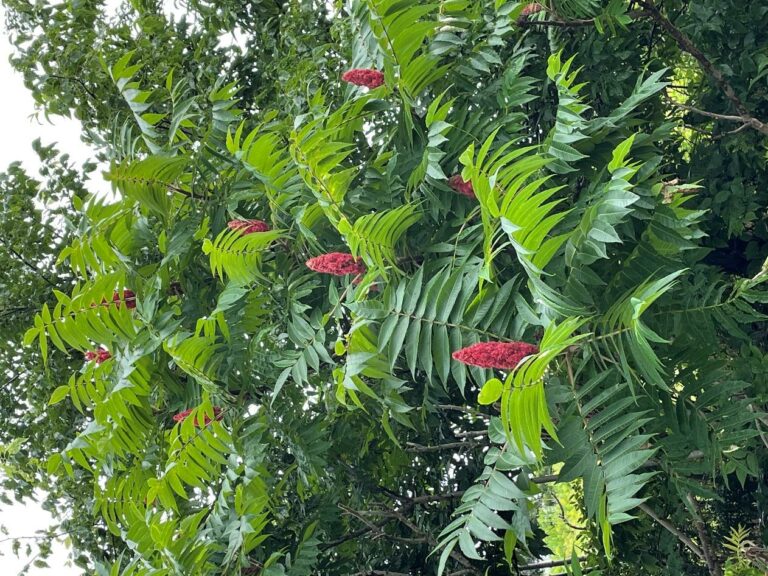Flora and Fauna of the Boston Harbor Islands: Sumac

Tens of thousands of years ago all humans were part of the natural world. By trial and error through observation, they learned which plants were edible and which also had healing properties as well as those plants to avoid. Sumac is one of those beneficial p-lants that humans have used for thousands of years as both a remedy for a number of conditions as well as a savory spice and refreshing drink.
The emperor Nero (54 AD-68 AD) praised the curative powers of sumac for intestinal issues. It is also a primary spice in Middle Eastern cooking where it adds acidic taste similar to lemons. The leaves of the sumac are high in protein and the berries, which are a brilliant red contain a number of vitamins (especially Vitamin C) and healthful antioxidants. The berries may also be use as a natural dye for fabrics.
The sumac on the Harbor Islands is known as Staghorn Sumac, one of 35 species of the genus Rhus. Interestingly, the plant is related to cashews. While there is another sumac which is poisonous, it is quite easy to distinguish the two as the Staghorn has bright red berries (called drupe) which be harvest all winter. The poison variety has white berries.
As sumac is so widespread, indigenous people all over the world have used the plant for thousands of years. Undoubtedly tribes local to the islands are familiar with it’s uses. Below is a short film with a Cherokee chef making Sumac Lemonade, a refreshing drink with a similarity to cranberry juice.
Here’s a link to a short video depicting a Cherokee chef preparing Sumac Lemonade for reference: Native America | Learn How To Make Sumac Lemonade | PBS
While you may be ready to use this wonderful plant for lemonade or spice or dyes, please do not harvest your sumac from the Harbor Islands. As a National and State Park, the islands and all plants and animals are protected. Don’t worry, sumac is very plentiful, and you should have no trouble finding as much as you may want or need.
